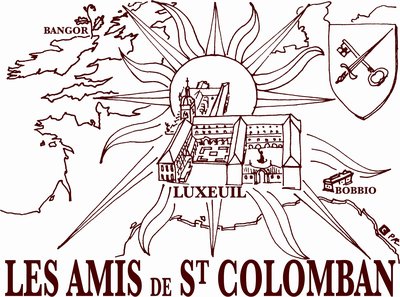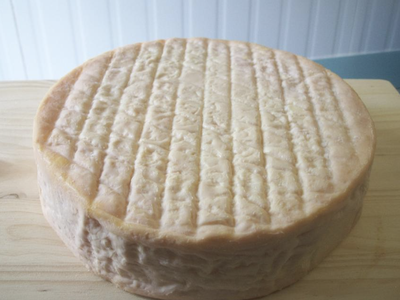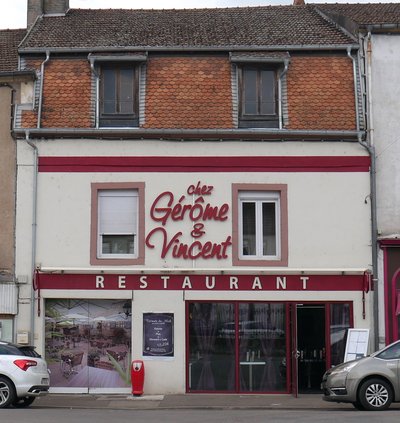Bains-les-Bains or La Vôge-les-Bains to Luxeuil-les-Bains

Grand Est
12. Bains-les-Bains or La Vôge-les-Bains to Luxeuil-les-Bains
Medium
7h30
29,3km
+506m
-522m
Step
Embed this item to access it offline
During this day you will alternate meadows, forests and heritage. You will discover natural sites then a town with a rich industrial past, Saint-Loup-sur-Semouse, before arriving in front of the remains of the monastery Saint-Pancrace de Fontaine-lès-Luxeuil, founded by Saint Colomban, you will end in Luxeuil-les-Bains, the capital of Colombia.
7 points of interest
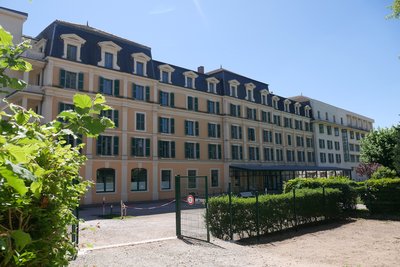
Établissement thermal qui accueille 5000 curistes par an - Amis saint Colomban TouristIt was the Romans, great lovers of the thermal benefits, who exploited the springs as early as the 1st century AD. They built the first pools on the site of the present Roman Bath (1845), on the eponymous square.
This is how the resort was born, which then took the name of its raison d'être: Balneum. The medals found embedded in the foundations of the Roman Bath attest to this ancient occupation.
In the Middle Ages the village was placed under the temporal authority of the Lords of Fontenoy who controlled the territory until the French Revolution.
The Baths of Bains-Les-Bains open onto vast and very luminous "Art Deco" treatment areas. The Spa specialises in the treatment of rheumatic conditions (osteoarthritis, degenerative and/or inflammatory rheumatism, osteo-articular trauma) and cardio-arterial diseases, thanks to its waters with recognised virtues (hyperthermal between 33 and 53 degrees, sodium, bicarbonate and silica-rich). In the 19th century mineral water was bottled and marketed under the name of Saint-Colomban. Today 5000 people a year take advantage of the benefits of thermal waters.
Enjoy a moment of relaxation in the waters of Bains-les-Bains.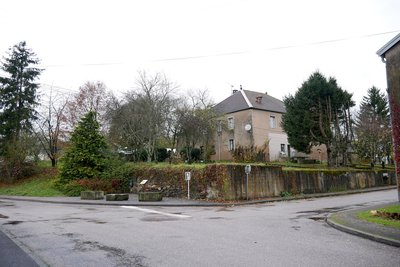
Site de la Vieille Cure depuis la rue Saint-Martin - Amis de saint Colomban St ColumbanLa Vieille Cure in Fontaine-lès-Luxeuil
The old maps mention two churches in the village, the church of the priory Saint-Pancrace and the church Saint-Martin located at the Vieille Cure.
In 2016, archaeological surveys uncovered the foundations of the choir of the church of St. Martin and the sarcophagi. A Roman road passed through the village and the site of the Vieille Cure was located near this road.
The site is located on the Via Columbani, on the Via Saint-Martin. An explanatory plaque has been installed at the crossroads of rue Saint-Martin and rue du Vay. Today it is a dwelling house (private property) which carries in its attic the traces of Gothic arcatures of the old church.
Heading towards the St-Pancrace priory by the rue Marquiset, visit the 19th century church with its stained-glass windows, a Merovingian or Carolingian sarcophagus from the Vieille Cure and a 16th century baptistery.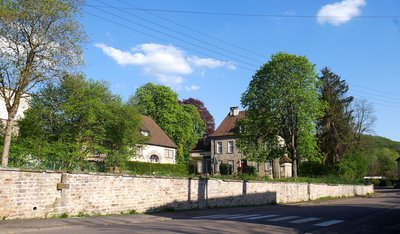
Maison du prieur de Fontaine - Amis de saint Colomban St ColumbanThe Saint-Pancrace Priory of Fontaine-lès-Luxeuil
Saint-Pancrace Priory of Fontaine-lès-Luxeuil
The Life of Saint Colomban, written around 640, relates that Colomban, faced with the influx of vocations in his community of Luxeuil, decided to found a third monastery on a place rich in water and fertile land. Around the year 600 the monastery was the granary of Luxeuil.
Over the centuries the monastery, under the authority of a prior appointed by the abbot of Luxeuil, became the owner of many lands as far as the Haute-Marne.
Like the Abbey of Luxeuil, the priory was rebuilt in the 17th and 18th centuries. It seems that not all the buildings were completed and after the Revolution the remaining buildings were sold to different owners including a foundry which considerably modified the site but preserved the refectory on the ground floor and a first floor which still bears the traces of monks' rooms or chambers. The prior's house with its park that you can see from outside has been preserved. Private property cannot be visited.
Ensemble thermal de Luxeuil-les-Bains - Amis de saint Colomban TouristThe Luxeuil-les-Bains Thermal Baths
With hot springs at 63° the site was occupied by man long before the Gallo-Roman period. In the 18th century, ex-votos discovered during construction work and exhibited in the Museum attest to traditions prior to the Christian era.
During the first and second centuries Luxovium prospered, merchants and craftsmen settled down as the Gallo-Roman stelae of the Alderman's Tower Museum, the most important collection in Franche-Comté, testify.
The destructive invasions of the 3rd to 5th centuries darkened Luxovium's rich past. On the arrival of the Irish monks at the end of the 6th century there is mention of the thermal baths at Luxeuil in the Vita Columbani.
The thermal waters were probably exploited during the Middle Ages but it was not until the 18th century that a thermal building was built on the springs, captured by the Romans, which filled the alabaster-covered basins still present in the 18th century.
In 1768 the new thermal establishment is inaugurated, today the building is classified Historical Monument, it is the oldest in France. During the centuries, the interior underwent many improvements following the degradation of the sandstone by humidity. Still today, important investments are made every year to maintain the services and comfort desired by the curists.
Do not hesitate to take a moment of relaxation in the thermal swimming pool or to take advantage of the beneficial treatments for the muscles of a seasoned walker.
Site des fours de potiers Luxeuil-les-Bains - Amis de saint Colomban HistoricalThe potters' kilns at Luxeuil-les-Bains
Luxeuil ceramics: a major activity in the ancient city of Luxovium.
The kiln workshop is located behind the present municipal cemetery. On this small hill several springs gush out, the clay soil and the wood from the forest justify this location.
In the 1980s, Philippe Kahn and a few volunteers unearthed this exceptional site.
The site has 9 kilns, some of which are well preserved, such as the terracotta tubular pipe kiln, which made it possible to increase the firing temperature to obtain a shiny and robust sigillé, very rare in the north of Lyon.
A furnace for amphoras is a testimony to this activity which allowed the transfer of liquids, wines, oils...
Originally the site occupied more than one hectare but the extension work on the cemetery around 1950 reduced the archaeological area.
Visits are organised by the Tourist Office.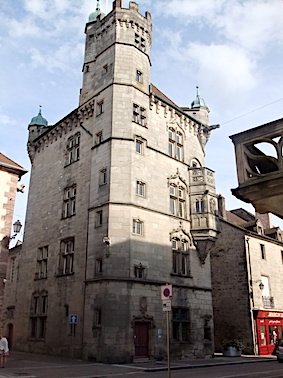
Tour des Echevins Luxeuil les Bains - Tour des Echevins Luxeuil les Bains TouristÉchevins Tower Museum
This belfry was built at the end of the 15th century by Henri Jouffroy, son of a rich Luxembourg merchant. In 1552 the notables moved into the building to hold council and thwart the decisions of the Abbot of the monastery concerning the management of the town.
In 1673, the council decided by decree that all objects discovered during excavations in the town were to be deposited in the Aldermen's Tower. This decree means that the Musée de la Luxeuil is one of the oldest museums in France.
An important collection of Gallo-Roman stelae and Gallic ex-votos are on display.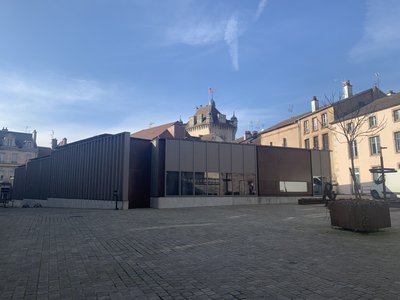
Amis saint Colomban St Columban&cclesia
In 2006, an early Christian church complex was discovered on the Place de la République in Luxeuil-les-Bains. A major archaeological dig was carried out from 2006 to 2010 by archaeologists from all over Europe and the Americas, under the direction of CNRS archaeologist Sébastien Bully.
The life of Columban (Vita Columbani), written around 640, mentions Luxovium as an abandoned castrum. Recent archaeological research has led to an in-depth re-reading of the conditions under which the first monks settled here, demonstrating the continuity of the settlement's occupation and the presence of an early Christian community by reusing elements of early Christian and ancient monuments. The Place de la République (formerly the Place Saint-Martin) has revealed the presence of a funerary church dating from the late 5th and early 6th centuries. More than a hundred sarcophagi covering an area of 600 m2 have been discovered.
The &cclesia, the site's interpretation centre, opened in 2021.
Luxeuil's rich archaeological heritage still leaves plenty to be discovered for future generations. On the Place de Baille, next to the current site, a church dedicated to Notre-Dame dating from the same period as the church of Saint-Martin was recently discovered. Future generations will be able to make the most of this site.
Find out more.
Description
Leaving the Saint-Colomban church in La-Vôge-les-Bains, you go down to the place of Dr. Leroy. You walk along the town hall and you can fill your water bottle with drinking water at the Samaritaine fountain.
At the crossroads straight ahead rue de Verdun
At the crossroads straight ahead rue de Verdun
- Turn right on rue du Charmois.
- Stay on your left and leave the D4.
- Carrefour D20 continue straight ahead to Saint-Loup-sur-Semouse
- Turn left on rue Aristide Briand in the direction of the church after having passed in front of the church, cross the Semouse and turn left in front of the town hall.
- At the roundabout, turn right towards Conflans-sur-Lanterne, rue Général Prévost, avenue Christian Jansen until the end of the town.
- Exit Saint-Loup, cross the stream and take the first road on the left, direction Hautevelle D243, first on the left when leaving the D243. Stay on tarmac road until you reach a fork on the left, after the clearing on your left, continue straight on dirt road
- In slight descent take on the left grassy path in the clearing then fork first path on the right. Go up the hill straight in the vegetation and then in the forest.
- At the crossroads with a dirt track turn left, at the hunting lookout take a right, first track on the left straight ahead.
- At the Calvary turn left, rue Saint-Martin, at the small roundabout, rue Saint-Martin in front of you, at the next crossroads straight ahead, rue Saint-Martin, at the fork in the road on the right, rue Marquiset.
- Cross the town after the Priory, turn right, chemin du Moulin, then left, rue du Beuchot, in the housing estate take the first street on the left, towards the forest.
- At the crow's-foot turn left, cross the railroad tracks with vigilance and leave the woods to arrive at Luxeuil-les-Bains, take the rue Beauregard, and go straight down into town. Pass in front of the thermal establishment
- Turn right on rue Carnot and then rue Victor Genoux and you will find Place Saint-Pierre on your left with the basilica of Saint-Pierre and Saint-Paul de Luxeuil-les-Bains.
- Departure : St-Columban Church, 4 rue d’Épinal, 88 240 La Vôge-les-Bains
- Arrival : Basilica of St. Peter and St. Paul, place Saint-Pierre 70 300 Luxeuil-Les-Bains
- Towns crossed : Grand Est and Bourgogne-Franche-Comté
Altimetric profile
Transport
Report a problem or an error
If you have found an error on this page or if you have noticed any problems during your hike, please report them to us here:

